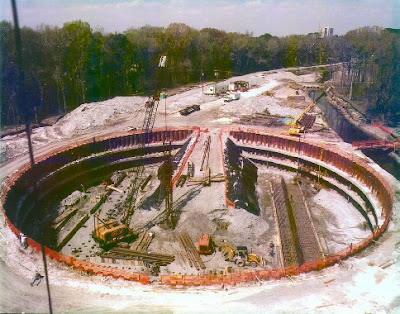SPONSORED
When a construction plan involves building across or within a waterway, an engineer has a choice: either work under water, or move the water. Since working under water is generally not logistically or economically feasible, the solution is often to use a cofferdam to displace water from the construction zone.
What is a Cofferdam?
A cofferdam is a structure used in construction within a waterway to prevent water from entering the construction zone. Cofferdams are generally temporary structures that are removed after the building is complete. By using a cofferdam, engineers can use materials and techniques that cannot be deployed underwater. A cofferdam generally consists of three components:
* Sheet Piles – Sheet piles are individual panels with interlocking connections that link the panels together, forming a single barrier.
* Wales – A wale is a beam that covers the top edge of the sheet piles around the perimeter of the cofferdam
* Braces – Braces are used to maintain the structural integrity of the sheet piles around the circumference of the cofferdam by resisting the pressure of the outside water against the sheet piles.
Cofferdams are generally made of steel to provide the strength needed to hold back water from a construction zone. Caissons are similar to cofferdams, but are often pressurized with air to keep mud from filling the caisson from below.
Uses for Cofferdams
Cofferdams are used in a variety of water environments, from small rivers to large harbors. Some of the more common uses for cofferdams include:
* Hydroelectric Dam Construction – Cofferdams are used to divert water away from the shoreline of a river to allow for the foundations of a dam to be constructed. In this application, generally one half of the river width is enclosed by the cofferdam at a time to maintain overall flow.
* Bridge Construction – Cofferdams are used to divert water away from bridge foundation positions, either on the shore or within the waterway.
* Ship repair – Sometimes cofferdams are used to generate a “dry dock” condition for a ship in order for repairs to proceed. This generally occurs when the ship cannot be moved to an actual dry dock, and it can also be more cost effective in some cases.
* Sunken Vessel Recovery – Cofferdams can be used to expose a sunken vessel in shallow waters to allow for recovery and repair if appropriate.
In naval architecture, a cofferdam can also refer to the water-tight bulkheads within a ship.




